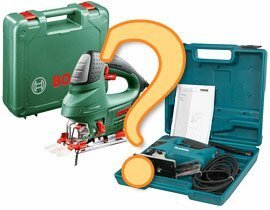The choice of electric jigsaws of these two brands generally comes down to the choice between the manufacturers themselves. About their features – the speech below. Well, and a little bit of practical material on the basis of Bosch PST 800 PEL и Makita 4327. Let’s compare what is better than Bosch or Makita.
Features of Bosch and Makita
Characteristics of these brands in general will be considered in the context of the range of products provided, its level (domestic or professional) and the use of new developments (innovation).
The range of manufactured products
While Bosch is a major corporation that produces a wide range of products internationally (power tools, household appliances, auto parts and turbine components), Makita has a narrower specialization. The Japanese corporation is focused on the production of tools, machinery and equipment.
As to the range of power tools – it is equally wide and varied in Bosch and Makita. Only in demolition hammers is Makita four times ahead of Bosch (20 models), and Bosch remains the leader in tooling production.
Household or professional?
Only Bosch distinguishes between household and professional tools. The positioning of Makita, on the other hand, is that it is a manufacturer of professional power tools. Bosch household tools are also called (by the color of the equipment produced) the “green series,” and professional tools are called the “blue series.
Given the limited functionality of household power tools, it only makes sense to compare professional Bosch and professional Makita.
In the 1990s, Makita released a line of household power tools, but under the Maktech brand. In this case, the best developments of the parent brand models were used, but the devices were supplied with simplified design and cheap materials. In this way, the main advantages were retained along with a lower cost to the end user.
Innovative technology and product quality
The only obvious advantage Bosch has over Makita is the introduction of new technologies due to its good research base. A prime example of this is the SDS-plus chuck, which embodies the system for attaching drills to rotary hammers.
Actively participating in the development and implementation of new technologies, Bosch successfully uses its line of household power tools in order to “test out” its innovations and then put them into mass production on professional tools.
The benefit for residential and professional users is obvious: the first ones get advanced solutions for quite affordable for home users, while the latter pay a decent price for the functionality that has already passed the “field” test and will not let them down at the most inopportune moment.
So, choosing between Bosch and Makita in general is a matter of taste. After all, both are quite decent quality. It will be more important to pay attention to a specific model of a particular tool. Let’s do it on the basis of electric jigsaws Makita 4327 and Bosch PST 800 PEL.
Features of the Makita 4327 and the Bosch PST 800 PEL
- Power. Bosch – 530 W., Makita – 450 W.
- Cutting depth. Bosch – 80 mm (6 mm for metal), Makita – 65 mm (5 mm).
- Blade clamping mechanism. Bosch – without additional wrenches/hedges, Makita – classic hexagonal attachment.
- Motor frequency. Bosch – 500-3000, Makita – 500-3100.
- Bosch has pendulum mechanism, while Makita has electronic speed control.
- Vacuum cleaner connection, transparent front panels, ergonomics and convenience – the Makita 4327 and Bosch PST 800 PEL all of this is there and works at the highest level.
Conclusion
Overall, Bosch and Makita jigsaws are great options for handymen and professionals alike. They both offer powerful motors, easy operation, and reliable performance. The biggest difference between the two is price, with Bosch jigsaws being significantly more expensive. Ultimately, it all depends on the budget and personal preferences of the user. Whatever you choose, Bosch or Makita, you can be sure that you will get a quality jigsaw that will last you a long time.
Read More: